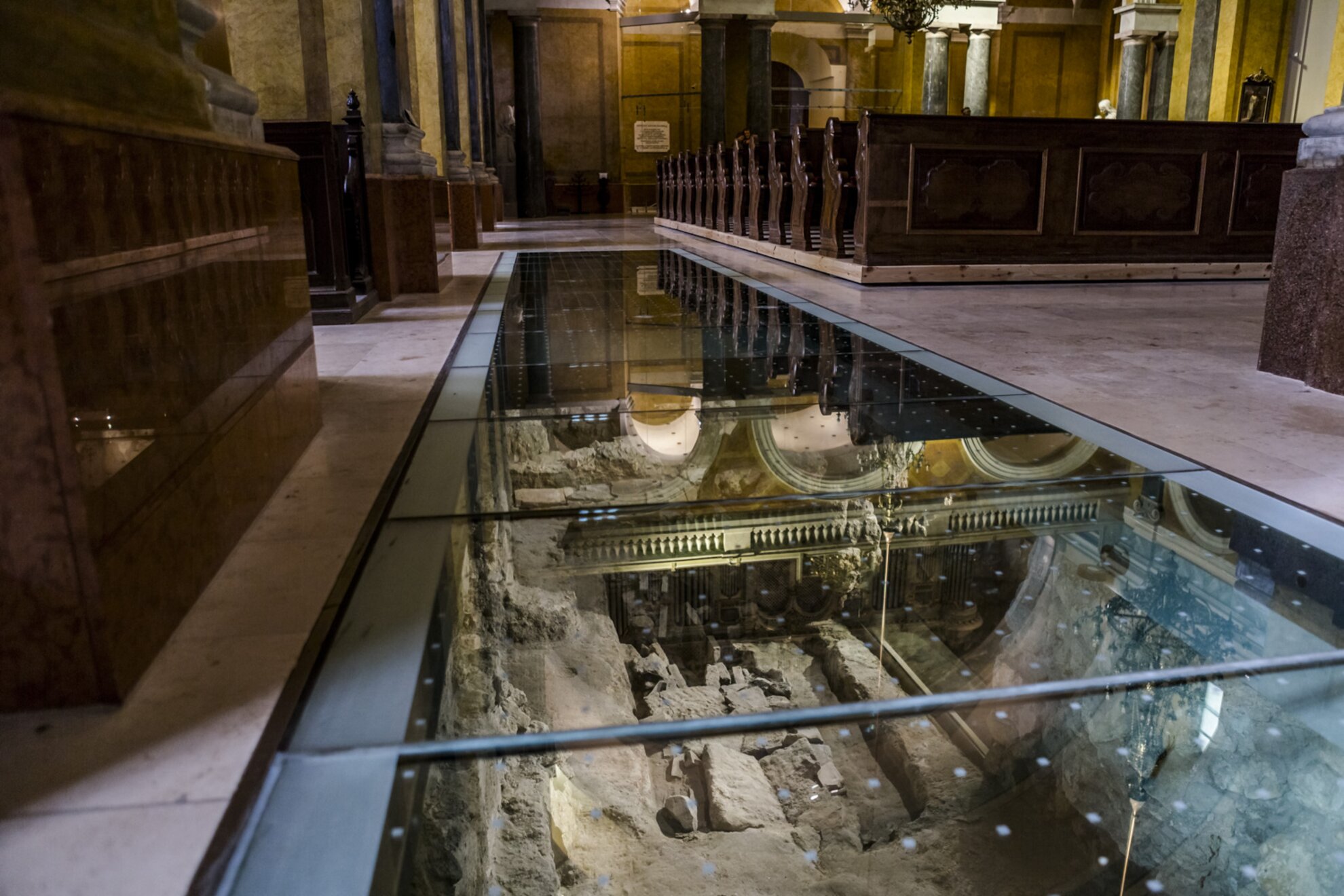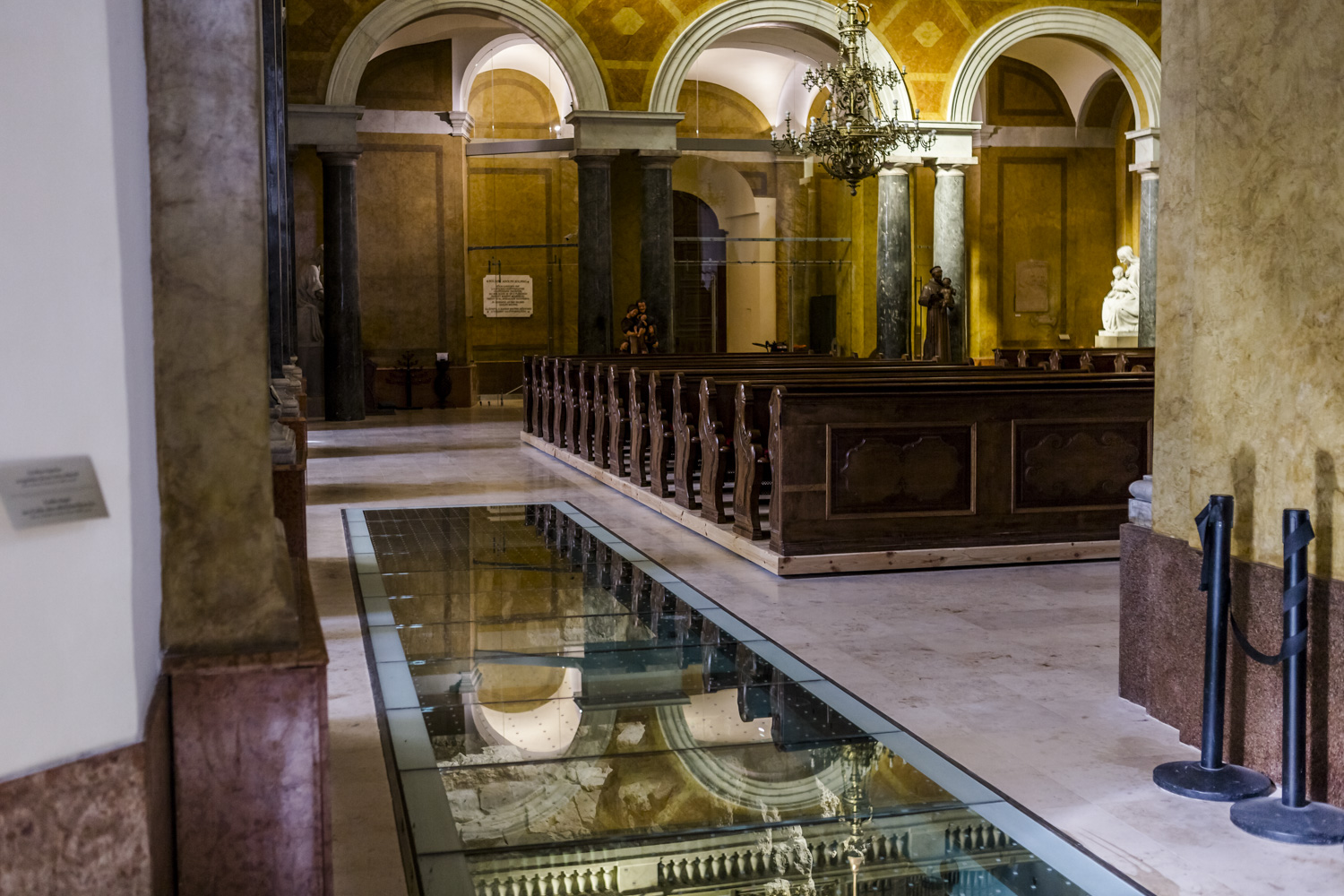The Downtown Assumption Main Parish Church, located on March 15. Square, recently began a new chapter in its nearly 2,000-year-old history – in March, appropriately enough. The undercroft of the church, also called the “witness of times”, was made available for the public to visit, so now we can literally look down into the well of two thousand years’ history, all the way back to the Roman Empire. After all, the first church was built in the 11th century on top of the walls of a Roman military camp.

As a result of the three-year, multi-phase renovation of the church, an exhibition space was built in the undercroft, where we can view the remnants of the aforementioned Roman walls, and even the floor-heating elements of the camp commander’s tent. In case you don’t like small, confined spaces, we recommend admiring the ancient relics through the glass surface built into the church floor. In this case however, you won’t be able to view the exhibition of the archaeological excavations, the chapel that serves as a new community and prayer space, and the Proberger Crypt, built in 1699, where 19th-century aristocrats are buried. (Fun fact: Jakab Proberger was the capital’s first known master brewer!)

The building’s 5,621-pipe organ was refurbished, as well, and for our sake, Liszt Prize-winning organist András Virágh and the church’s musician played for a bit, so we could witness how the instrument’s two engines move 50 square meters of air per minute. World-renowned Hungarian musician Franz Liszt had also stepped on the chancel and played the organ, since he lived in the parish and led the church choir for many years. In Budapest, this was the church where the famous composer played most often. All pipes of the massive musical instrument, ranging from six meters to six millimeters long, were dismantled and cleaned thoroughly. The church musician told us that if we were to build a similar organ, it would cost about a half billion forints – but naturally, this particular organ is invaluable.

Walking through the interior of the church, remembrances of 14 architectural eras look down on us or hide somewhere beneath the surface. The first, Romanesque-period basilica was where Bishop Gellért was buried; later, both King Sigismund and King Matthias rebuilt the structure. The Turkish invaders of the Ottoman Empire used the building as a mosque. Today’s structure dates back to the 16th century, but the Baroque exterior was created after a fire in the 18th century. Later, it was reconstructed by Hungarian architectural giants like Imre Steindl, known for designing the Parliament. From an architecture-historical perspective, this church is the most complex building of Budapest. In 2010, a 14th-century fresco was discovered, the painting quality of which can be likened to the works of the era’s greatest artists. The artwork, depicting Saint Mary, can be found in one of the booths behind the sanctuary, near the mihrab – a niche in the wall that used to indicate the direction of prayer from the Ottoman era.

The Downtown Parish Church and its old-new undercroft are not only historical and sacred, but also cultural sites. Within the frameworks of the Budapest Spring Festival, the Philharmonic Choir of Zugló will hold a Franz Liszt evening on April 9th, while ordinary visitors can become more acquainted with the building during the Budapest100 building-visiting event on April 22 and 23. Beginning on April 19th, András Virágh will give a 45-minute concert every Wednesday. On April 11th, as on every Holy Tuesday of Easter, they will play Bach’s Saint John Passion, and every year, Mozart’s Requiem plays on December 5th and All Souls’ Day – December 5th is the composer’s death anniversary, and Requiem was first played here in 1801. In addition to Hungarian, mass is held in English and Italian every Sunday. It’s a nice venue for weddings, as well: Lajos Kossuth, who was a Lutheran, vowed eternal fidelity to his wife, Terézia Meszlényi, in the former parish. The memorial service of his greatest political rival, Count István Széchenyi, was also held here.




